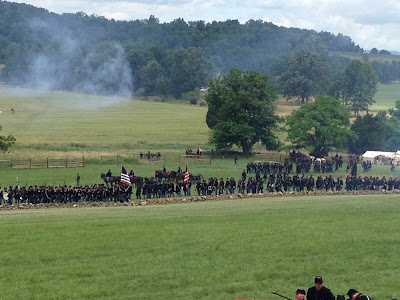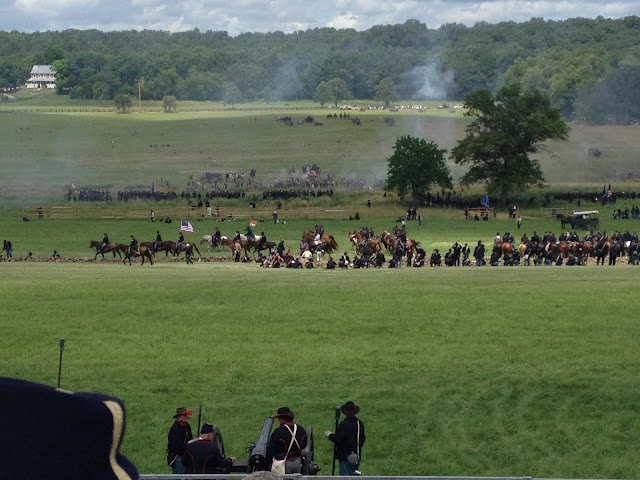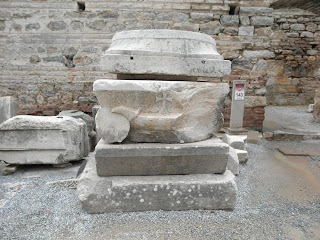One thing I am a little embarrassed about is that I didn't know anything about Çanakkale, in Turkey, until I actually visited the place. 'Çanakkale' means 'Channel', as in Dardanelles Channel. My knowledge of modern history is so Eurocentric, I had not even wondered how the Gallipoli campaign is viewed and remembered in Turkey today!
For the Turks, Gallipoli was indeed a rare victory in the Twentieth Century when the Ottoman Empire was suffering defeat after defeat. Although Turkey lost WW1 and the Ottoman Empire fell as a direct consequence of it, Gallipoli gave the Turks not just some measure of dignity but a new hope and a new national-ethnic identity.
The Ottoman Empire was a very international empire, ruling over not just Turkish peoples but also the Greeks, the Romans, the Slavs, the Armenians and a myriad of ethnic groups of the Balkans and Asia Minor, not to mention subjects of Near Eastern (sorry about using another Eurocentric terminology!) provinces, especially Egypt and Syria-Mesopotamia.
The Empire used to create such powerful force of arms out of this amalgam of ethnicities, but, by the nineteenth century, their military was falling apart. In face of European nationalism, it completely lost its edge. The Empire was called the sick man of Europe. The collapse of the Ottoman Empire was merely a question of when by the turn of the twentieth century. Being Ottoman was no longer cool or desirable.
Gallipoli is a place where a new sense of Turkishness, instead of Ottoman-ness, was forged. Or so it is believed, apparently. I found a new film, about which the rest of the world seems to be totally oblivious, titled 'Çanakkale 1915'. (It does make me suspicious that young Turkish people don't know much about this history either - that's why they added '1915' to the title?) In this movie, the Turks are underdogs, desperately fighting off Imperial powers of the West. Through their struggle and victory, they regained confidence - but at the same time, since the Ottoman Empire lost WW1 despite their win at Gallipoli, they finally decided to let the empire go extinct and to let a new nation, whose spirit was first manifested at Gallipoli, be born.

Gallipoli is not a sort of battle that can easily be translated into a movie script or action sequences. The front was mostly static, as the Anglo-French forces failed to evict the Turks from Gallipoli peninsula. The campaign was conceived as a mobile sea-land joint warfare with the ultimate aim of quickly taking the capital Constantinople; unfortunately, due to sluggishness of amphibious operations on the part of the Anglo-French allies and strength of Turkish shore naval defence and a determined opposition by army troops under command of Kemal Pasha, it was quickly degenerated into a Western-front style trench warfare. At least the weather was better than in France, but the warmer climate also meant an even more unhygienic environment for soldiers, to put it mildly.
There has been, as far as I know, only one major attempt to make a war movie out of Gallipoli in the west, titled, well, Gallipoli, starring Mel Gibson. Inevitably, it is about ANZAC soldiers who had to endure hardships of war in far away place, fighting people they had no quarrel with. It is about awakening of Australia as a modern nation, rather as a British colony.
This film is a Turkish response, perhaps. The Turks indeed think that they inspired Australians to become an independent nation. While the Australians brought back their dislike of the idea of fighting for the British Empire, the modern Turkish Republic was also born in the dirt and mire of Gallipoli. The Australians and the Turks at Gallipoli are almost brothers-in-arms!!
Anyway, so, actions are rather second-rate by western standard, as military history is not the point in this film. Some scenes are downright cheesy (like a guy carrying a 245kilo shell in the midst of a half-destoryed gun emplacement); CGI used for naval battle scenes is OK if this was a computer game but not really up to it by today's standard for action movie special effects. So, for us non-Turks, this is not an entertaining movie, but useful to learn how history is understood by the Turks today.
More info on IMDB website:
http://www.imdb.com/title/tt2415964/
Also apparently the full movie is available on Youtube?
As for the town of Çanakkale itself, it is a scenic coastal town with strong military presence. For many foreign visitors, the reason to visit here is to see the excavation site of Troy, about 45 minutes drive from the town.
Actually, Schliemann took most of the best stuff from the site, so all you see is stone bases of ancient buildings from the end of Bronze Age.
In the middle of town, there is a real-size wooden horse of Troy they used in the movie 'Troy'. The one with Brad Pitt.
I was there on March 17th. Missed the big celebration of Gallipoli victory, which was scheduled for the next day. But I can see several warships sailing down the channel towards the Aegean, obviously as a part of its preparation.
Feel like I will have to go back to the place in 2015 for their centenary celebration....
























